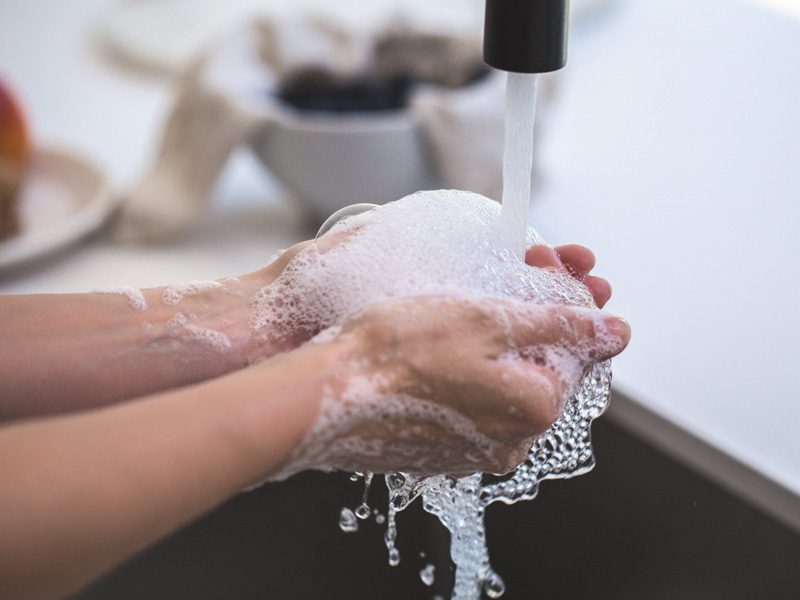Water is essential for life, but not all water is created equal. If you have encountered limescale deposits in kettle, spotty shower doors, and even dry skin, you are dealing with hard water in your home. Water hardness is a common problem in Ireland and fortunately there’s a simple solution to treat it throughout your house: water softening.
For those unfamiliar with how to treat hard water, having a water softener installed may seem daunting and expensive. However, the good news is that in most cases, water softeners can easily be added to your existing plumbing.
In this blog, we talk about what a water softener is and how it works to make your life easier and comfortable.
Before we dig any further, let’s review what is it that makes water our “hard.”
What is Hard Water?
Hard water is a common term used to describe water that contains high levels of dissolved minerals, primarily calcium and magnesium ions. These minerals are naturally present in the earth’s crust and are often found in groundwater sources as water percolates through deposits of limestone, chalk, or gypsum.
When water comes into contact with these mineral deposits, it absorbs calcium and magnesium ions, resulting in increased mineral content. This elevated mineral concentration gives hard water its characteristic properties, including a tendency to leave behind mineral deposits, known as limescale, on surfaces such as pipes, appliances, and fixtures.
While hard water is not harmful to health, it can pose challenges in terms of maintaining plumbing systems, appliances, and overall water quality.
What is a Water Softener?
A water softener is a whole-house filtration system that removes hardness-causing calcium and magnesium minerals from your water through a process called ion exchange.
Whole-house water softeners come in a variety of sizes and styles to accommodate the size of your home and family. The softener is installed in the basement, garage, utility closet or wherever water enters the house.
A typical water softener consists of a tall, narrow resin tank, and a short, wide brine tank. In most under sink water softeners, this resin tank can usually be found inside the cabinet.
A water softener is made up of three components: a control valve, a resin tank, and a brine tank. These three work in conjunction to remove the minerals from hard water, monitor the flow of water, and periodically clean the system through a regeneration process.
How Do Water Softeners Work?
Water enters the top of the water softener tank and percolates down through a bed of spherical resin beads. These plastic beads, usually made from polystyrene, are negatively charged using sodium ions. On the other hand, the calcium and magnesium are mineral ions that have a positive charge. That means they can be attracted by a negative charge, much like opposing magnets.
These resin beads attract the mineral ions and trap them, while the rest of your water flows through the system — and the result is soft water.
Sooner or later, however, the beads reach maximum capacity and can’t attract any more mineral ions. At that point, the softener tank must be regenerated, or, flushed clean. That’s why water softener use a separate tank containing a brine solution full of sodium ions to wash away the hardness minerals. A control valve (Clack valve) calculates the amount of water that has flowed through the softener. When it reaches the preprogrammed setting, regeneration automatically begins.
During regeneration, salty water from the brine tank flows up the fill tube and into the resin tank. A rinse cycle commences and the salty water washes the mineral deposits off the resin beads. The regenerated water—and all those destructive mineral deposits—are flushed out. The system then automatically reverts back to softening the incoming water.
The regeneration process slowly dissolves the salt in the brine tank. So, at some point, you’ll have to add more pellets to the tank. (Again, the resin beads are permanently sealed in the softener tank and never need replacing.) How often you’ll need to add salt depends on how much water you use.
What Does Water Softener Regeneration Mean?
Regeneration is how a water softening system cleans and recharges itself so it can continue providing your home with soft water. As you’ll recall, the water softener has two main components: the resin tank in which the ion exchange occurs and a secondary brine storage tank.
The secondary brine storage tank is where the homeowner will need to add water softener salt. During regeneration, the water softener will take the brine solution into the softener tank, and the ion exchange process happens again, only this time in reverse.
The media gets a bath in the salt solution. Hard minerals caught in the resin are released and the media gets replenished with sodium ions. Finally, water containing the hard minerals and other waste gets flushed out of the system.
Enjoy Limescale Free Home with a Water Softener
If you’re tired of hard water problems like mineral buildup, spotty dishes and dry hair, it’s time to see what water softening can do for your home. From cost savings and better appliance performance to healthier skin and softer laundry, you’ll see and feel all the benefits of a water softener.
When it comes to improving your water quality, Hydrotech Water Services is your trusted partner. We offer a range of high-quality water treatment systems designed to address your specific water issues. To understand the type and size of water softener that would suit your home, feel free to get in touch with our team for a free consultation.


